Guillermo del Toro Dazzles With 'The Shape of Water': 'Inspiration is a Mystery for Everyone'
The visionary filmmaker returns to form with a story decades in the making.
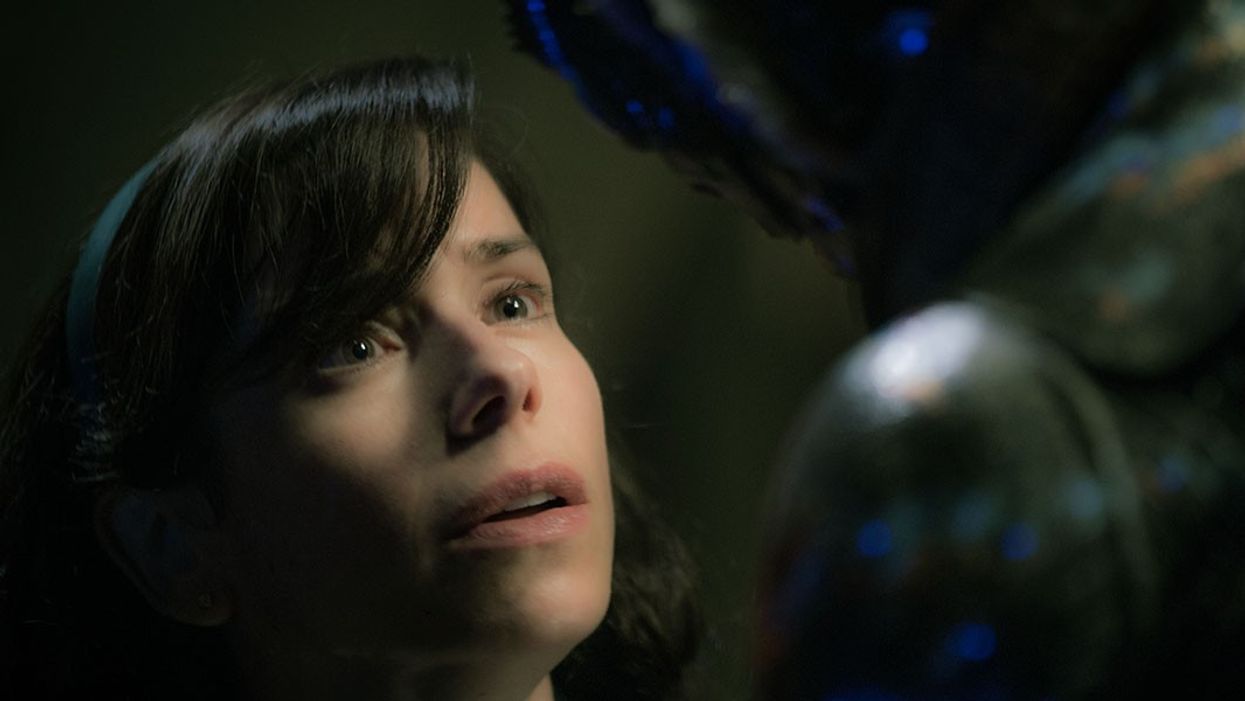
In the back of the theater, the Mexican auteur Guillermo del Toro (Pan's Labyrinth, Hellboy, Pacific Rim) was reliving first love alongside his audience at the screening The Shape of Water at TIFF 2017. Del Toro's latest filmwowed at Telluride, took home the Golden Lion at Venice Film Festival, and earned an equally glowing response just now in Toronto. Safe to say, this sexually-charged monster flick won’t stop turning heads for some time.
NFS last spoke with del Toro at Annecy 2016. This year, we're on the ground at TIFF 2017 to hear del Toro wax eloquent about his latest opus. He arrived at his press conference beaming, deflecting applause by introducing himself with a pat on his belly as "the Mexican Michael Moore." Usually, del Toro employs irreverent humor or wise observations when talking about his work, but this time around, he started off dead earnest. "Venice was one of the most moving moments in my life. It was truly renovating," he recalled. "That's the life of a storyteller: you do things for a while, start over, try new things. Sometimes it works, sometimes it doesn't. When it does work, it's extremely moving and beautiful."
In classic fairy tale form, The Shape of Water recounts the fable of "The Princess Without a Voice." A powerfully expressive Sally Hawkins stars as Eliza, a mute janitor in a highly classified government facility. The graceful Doug Jones portrays "The Asset," a beautiful, bipedal amphibian imprisoned in the facility for the purpose of "scientific" experiments. Gradually, the two develop a nonverbal romance, which means that this film is literally heartfelt: a silence rife with visual dialogue.
But it's not just a romance. The Shape of Water is a Trump-era film, a queer film, it's part homage and part musical. And above all, it's a love story, one of the most original and relatable in recent memory. Co-written by del Toro and producer/screenwriter Vanessa Taylor (Game of Thrones, Divergent), The Shape of Water glides downstream. The plot flows, the soundtrack soars, melding throwback tunes with an otherworldly score by Alexandre Desplat. Born of an idea that has been gestating for decades, The Shape of Water is an ode to lost Romanticism, a call for healing. From the moment that water trickles down-screen in the opening seconds to the film’s final credits, you’re enthralled, completely lost in a world of del Toro’s making.
So what makes this 21st century fable so powerful? Del Toro & company did their best to answer that question and more during their TIFF press conference.
Don’t seek inspiration, let it find you
“Inspiration is a mystery for everyone,” del Toro declared. “Including the guy in front of the computer at 5AM praying for a fucking idea.” Del Toro continued, “I have a couple of incomplete stories I simply can’t finish. I spent about a year with the first ten pages of Pan's Labyrinth before I could solve it.” He shrugged, accepting his fate. “Stories don’t come to you because you want them to, they happen. People ask you ‘Why don’t you do one like this, or that…’ But they just happen.”
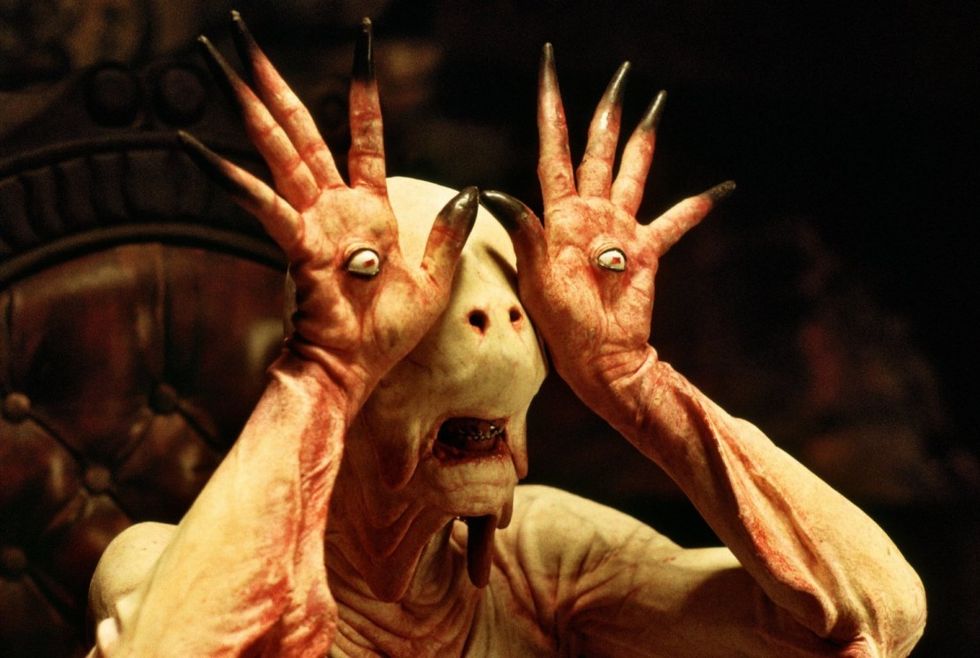
The story for The Shape of Water first came to del Toro at age 14, when he saw The Creature from the Black Lagoon. It was both a filmic and a sexual awakening: “When I saw that film, I literally had Stendahl Syndrome. I was moved to tears by its beauty, infatuated with Julie Adams, and innocently hoped that she and the monster would end up together. They didn’t. So I was determined to redo the ending.”
For a number of years, del Toro tried to do a straight homage without success. Then came the catalyst: when working with writer Daniel Kraus on the Netflix series Trollhunters, Kraus mentioned an idea that he had been mulling—a janitor in a secret government facility who meets an amphibian man in a cylinder and takes him home. The perfect setting for a romance, thought del Toro, and when The Shape of Water finally found funding, Kraus became Del Toro’s associate producer.
Kraus still finds the whole thing surreal. “Across the borders of language, geography, there was Guillermo, watching and feeling the same exact stuff I was,” he recalled. “Almost like we had one of those tin-can radios that kids use, even though we wouldn’t meet for many years. When I told Guillermo my idea, it was less me giving him an idea and more me reminding him of something that we’d shared for many years, with both of us waking up to it.”
“Love is the only thing that both The Beatles and Jesus agreed upon. One alone I don’t trust completely. The two together I trust.”
Black Lagoon wasn’t their only influence, however. The Shape of Water is also an homage to classic Hollywood musicals—except that, unlike more heavy-handed tributes, del Toro’s references slide by like grace notes. Notes that don’t distract, but amplify. “I didn’t want my camera to go into a theater and discover Singing in the Rain,” he explained. “I wanted to discover movies that nobody remembers, movies that deserve new life.”
But the ultimate inspiration for The Shape of Water was love. “It’s a movie about the love of cinema—but even more important, it’s about being in love,” he asserted. “That was why I chose to make Eliza silent: because love renders you speechless. Words can’t begin to express that depth of emotion.” He paused, but then his eyes twinkled. “Love is the only thing that both The Beatles and Jesus agreed upon. One alone I don’t trust completely. The two together I trust.”
Share your passion
Del Toro claims that his role with actors is minimal, that he simply tries to guide them with emotional references, while they describe his process as “magic.” The few fortunate enough to work with him say that his unbridled passion is contagious: impossible not to get on board.
To help Hawkins prepare for her role, del Toro gave her DVDs of Buster Keaton, Charlie Chaplin, Stan Laurel and others, so that she could “study the movement of silent performers and add a theatrical quality to her character.” She also studied ASL (American Sign Language) and specific dance routines, “plus a dose of Audrey Hepburn, because I wanted her to embody that classical elegance,” he added.
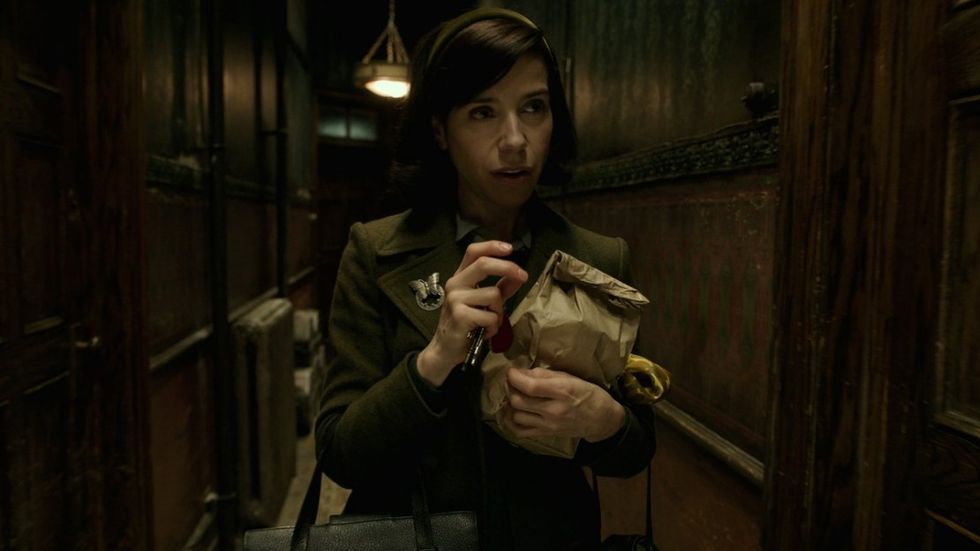
Hawkins embraced it all. “I love the ability to learn a different skill and have excuse for it. But I never feel that I do enough, because the world we’re creating, to make it believable, is infinite. So the references and details that del Toro gives us are truly welcome props, they help us fine-tune this vast universe that we’re all creating.”
One of the biggest challenges that became movie magic was del Toro’s Aquaman. At 6’3” and 140 pounds, Doug Jones had the perfect frame for the role. The FX team could build on his physique without making him too bulky and give him a sense of movement. And because this was Jones’ sixth film with Del Toro, beginning with Mimic (1997), the pair have a strong rapport.
"Guillermo had me channel a little bit of The Silver Surfer...and a little bit of a professional matador. ‘I want you to have sexy hips like a bullfighter.’"
“We’ve done so much together that we have a shorthand for communicating,” Jones revealed. “Guillermo had me channel a little bit of The Silver Surfer—the most subtly strong character I’ve played—and a little bit of a professional matador. ‘I want you to have sexy hips like a bullfighter’ he told me. ‘Never be seen standing straight up and down.’” Unable to contain himself, del Toro chimed in: “A bull fighter is never frontal, there’s a majesty to that. But Jones also knew how to play animal innocence, how to rise out of the water.”
As for Michael Shannon, who plays Strickland, the quirkily terrifying government agent who reads “The Power of Positive Thinking” in between more nefarious pursuits, he was grateful that del Toro never described his character as evil. “In my view, Strickland is not a villain,” Shannon explained in his trademark deadpan drawl. “All Guillermo told me is, ‘I want you to play a guy who works for the government in the '60s, he’s got a family, he’s struggling, he’s under a lot of pressure and wants to succeed. He embodies a kind of American anxiety. On the surface is this bulletproof veneer, underneath it is a lot of uncertainty.’” Shannon paused. “A lot of times, uncertainty is the gestation of violence.”
Octavia Spencer, who plays Zelda, Eliza’s cleaning partner who deftly fills in her colleague’s silences, nodded in agreement, “Guillermo’s direction is always subtle. When I first met with him, I knew nothing about my part. I had already played various female characters from the '60s, but this one felt different because he and Vanessa allowed me have a point of view, to not be so subjugated, even though Eliza and I were subordinates. My character got to ramble on, to be the queen of her domain.”
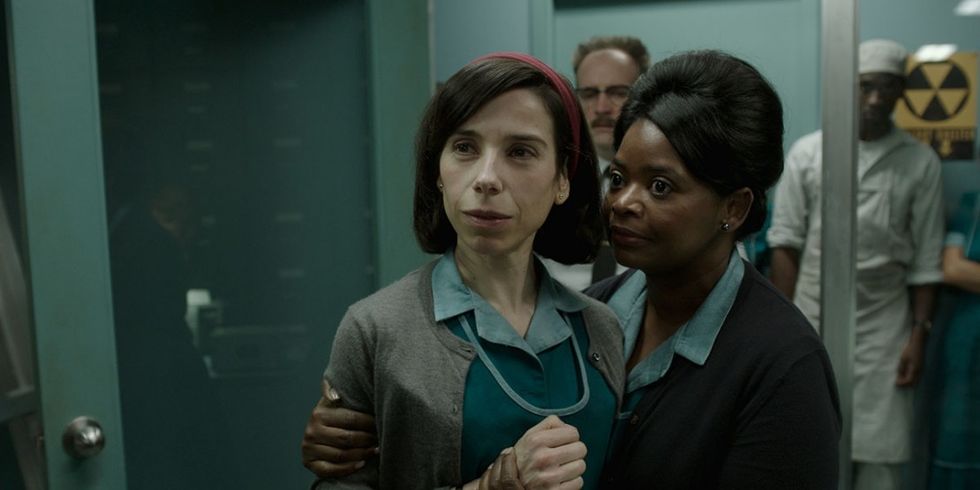
Del Toro gives his co-writer, Vanessa Taylor, a great deal of credit. “People assume that I’m always in charge,” he said. “But most of the time, Vanessa was doing the hard part. She was responsible for most of the monologue in the scene between Strickland and the General, for example. A scene based on my meetings with studio executives, meetings where I’ve gotten destroyed.” Taylor wouldn't let del Toro deflect all the credit. “This whole experience has been incredibly inspiring,” she asserted. “To work with someone so purely creative and passionate is a luxury.”
Go over budget
According to cast and crew, despite all the bonding, despite all the prep time, this was not an easy production. Del Toro agreed. “For us, it was horrible,” he confirmed. “We’ve never been as tense as we were on this film, we were cramming a $60 million movie into a $19 million budget. God knows I didn’t get this fat by showing self-control. I was demanding the impossible from my producer, Miles Dale, the whole time. We had to call in every favor, use every ingenuity and resource at our disposal, just to get this film made.”
"A budget is a state of mind."
The experience was humbling. “I think I need a one-year sabbatical after this one,” he confided. Nevertheless, even after all the physical and emotional strain that The Shape of Water demanded, del Toro stands by his affinity for elaborate fantasies. “A budget is a state of mind,” he explained. “As my friend James Cameron has observed, ‘People make $10 million films that look like $30 million. Then studios give them $80 million and their film looks like $30 million. The question is, how big can you go? You should always exceed your budget.’”
That said, given the uncommon nature of his latest masterpiece, del Toro is grateful for the budget he received from Fox Searchlight. Think about it: a mute janitor who falls in love with a fish-man? Not exactly your typical film pitch. Clearly, it helped that he was such an established filmmaker.
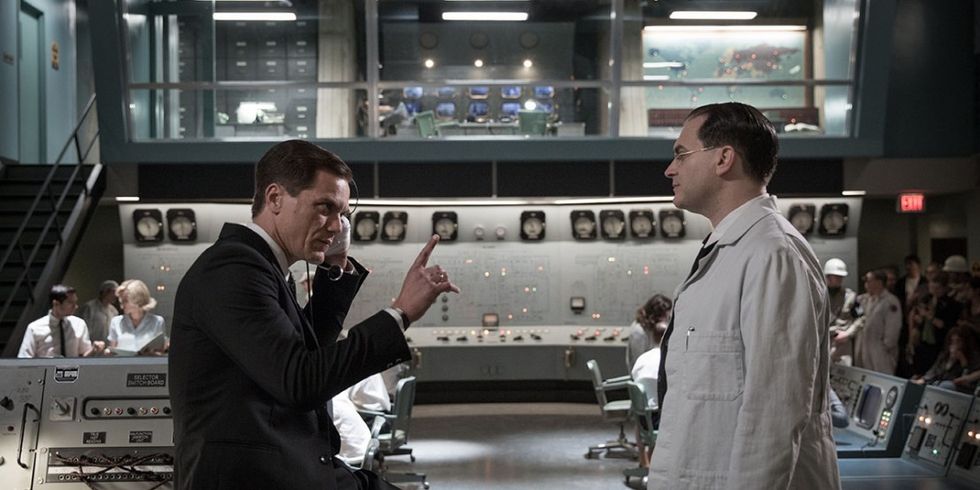
His gratitude shows. “My relationship with Fox Searchlight has been the best I’ve ever had with a studio in Hollywood,” he declared. “I took them through the story, crazy as it was, and said I wanted to shoot in black-and-white. They said ‘That’s all great, we want to do it, but not in black-and-white. And this is what we can spend.’ They gave me a number; I asked ‘Can that include my salary?’ They said yes.” He smiled. “And then I went over-budget.”
Have no shame
Del Toro’s studio experience hasn’t always been pleasant, but he doesn’t blame the executives. “No one has screwed with me since 1997,” he declared. “Any problem you have with my movies, I’ve done on my own.”
The filmmaker is acutely aware of the creative rollercoaster. Not all his films are equal in the public eye, and he knows it. Some dismiss his work as reductive, too full of fanboy references and fairy-tale simplicity. Others cite his recent Crimson Peak (2015) as a box office failure. (Personally, he still loves the film, and blames marketing for its losses.) “As a storyteller, I have no shame,” he insisted. “Why shouldn’t I do whatever I want? This is who I am. I’ve never wavered yet. And I’m gonna go to the grave doing what I do.“
"This film is 25 years of craft, it’s me letting my hair loose."
Del Toro’s determination is palpable. “Storytellers have to be shameless,” he continued. “When a particular story speaks to you, it has to be stronger than you are, and your certainty has to be stronger than anyone else’s. That’s what gives you faith, that’s what carries you through the difficulties of production.” He chuckled, looking back. “So many times on set we would look at each other like ‘What the fuck are we doing?’ I didn’t know if this film would work. But I did it anyway, because I liked it! This film is 25 years of craft, it’s me letting my hair loose.”
Del Toro is the first to admit that the overwhelmingly positive response to The Shape of Water thus far has been very cathartic. “When Alfonso Cuarón saw this film, he told me ‘This is your post-therapy movie. And it shows.’ There are so many things I’ve been afraid to try in the past. And when I have tried, well... The only way to do something successfully is to be so close to failure that it actually feels like a failure.” He paused, savoring the moment. “It’s worth the risk.”
Hope for healing
In sum, del Toro’s Shape of Water is a film about love: a love of storytelling, a love of cinema, an indictment of uniformity, and a celebration of difference. “That’s why the relationship between Eliza and The Asset was so essential,” he explained. “And that’s why I set the film back in the Cold War. I wanted to show that Americans in 1962 had the same paranoia that we have today. They went back in their imaginations, they said ‘Let’s make America great again.’ Fantasies crystallized. Jet-finned cars, super-fast ovens, perfectly-coifed wives... It was a great time to be alive if you were A WASP. But if you were anything else, it was pretty bad.”
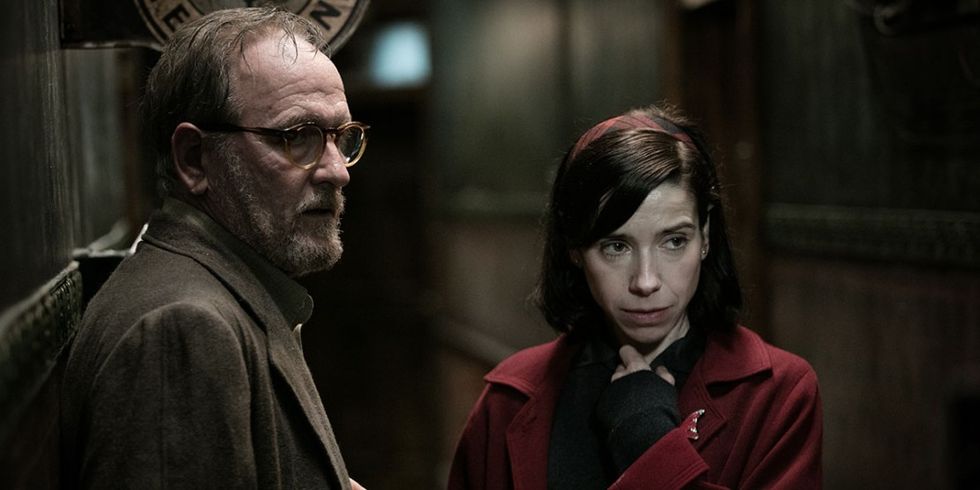
“There’s only one way to put it,” del Toro continued. “Uniformity is madness. If two people are the same, one is extraneous. You don’t need them. Difference is our only hope for the future. I just hope the world lasts enough so we can start repairing it again.”
“I actually do believe that film has the power to heal,” del Toro declared. “Reaching everybody is impossible, I know that. But so many times in my life I’ve been on the brink, and movies have pulled me back. So if this film can do that for even one single person, that’s great. That’s why we do this. To connect on a level beyond words.”
You check out the full press conference here.
See all of our coverage of TIFF 2017.
Featured image: 'The Shape of Water'. Courtesy of TIFF.
Source: TIFF 2017












